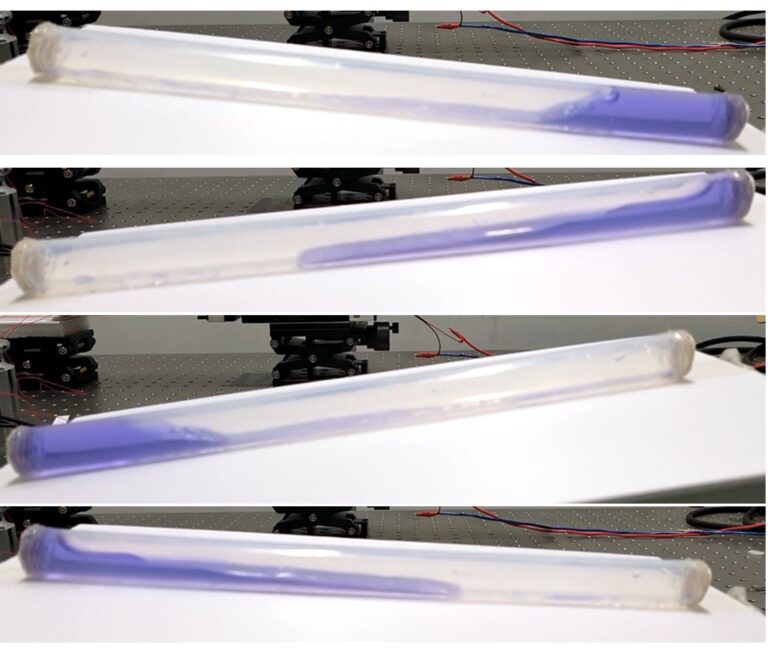As any surfer will tell you, waves pack a powerful punch. Now, we are one step closer to capturing the energy behind the ocean’s constant ebb and flow with an improved “blue energy” harvesting device.
Researchers report in ACS Energy Letters that simply repositioning the electrode—from the center of a see-sawing liquid-filled tube to the end where the water crashes with the most force—dramatically increased the amount of wave energy that could be harvested.
The tube-shaped wave-energy harvesting device improved upon by the researchers is called a liquid–solid triboelectric nanogenerator (TENG). The TENG converts mechanical energy into electricity as water sloshes back and forth against the inside of the tube. One reason these devices aren’t yet practical for large-scale applications is their low energy output.
Guozhang Dai, Kai Yin, Junliang Yan and colleagues aimed to increase a liquid–solid TENG’s energy harvesting ability by optimizing the location of the energy-collecting electrode.
The researchers used 16-inch clear plastic tubes to create two TENGs. Inside the first device, they placed a copper foil electrode at the center of the tube—the usual location in conventional liquid–solid TENGs.
For the new design, they inserted a copper foil electrode at one end of the tube. The researchers then filled the tubes a quarter of the way with water and sealed the ends. A wire connected the electrodes to an external circuit.
Placing both devices on a benchtop, the rocker moved water back and forth within the tubes and generated electrical currents by converting mechanical energy—the friction from water hitting or sliding against the electrodes—into electricity. Compared to the conventional design, the researchers found that the optimized design increased the device’s conversion of mechanical energy to electrical current by 2.4 times.
In another experiment, the optimized TENG blinked an array of 35 LEDs on and off as water entered the section of the tube covered by the electrode and then flowed away, respectively.
The researchers say these demonstrations lay the foundation for larger scale blue-energy harvesting from ocean waves and show their device’s potential for other applications like wireless underwater signaling communications.
More information:
Space Volume Effect in Tube Liquid–Solid Triboelectric Nanogenerator for Output Performance Enhancement, ACS Energy Letters (2024). DOI: 10.1021/acsenergylett.4c00072. pubs.acs.org/doi/abs/10.1021/acsenergylett.4c00072
American Chemical Society
Read the full article here








